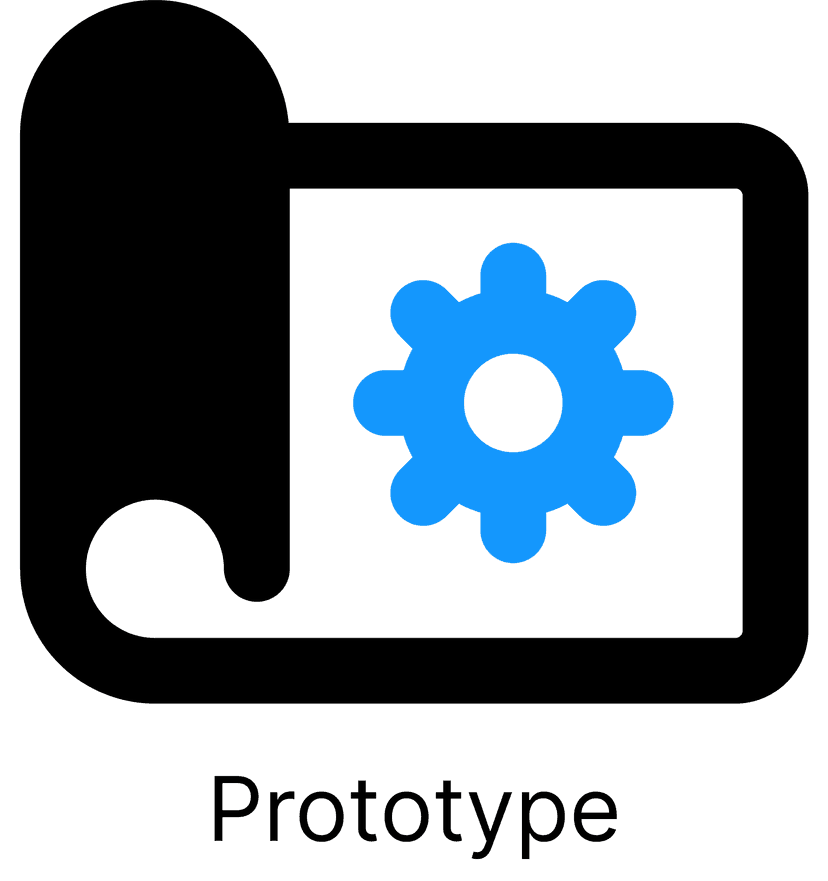Prototype

What is a prototype?
Definition
A prototype is an early model or sample of a product that is created to test and validate its design, functionality, and user experience before it is finalized and launched. In software, a prototype is a version of your product that is usable but not available to the public. It commonly will only allow for clicking through flows or viewing what the proposed solution will eventually look like.
Analogy
Imagine you're building a house, but before you start constructing the actual house, you create a smaller, scaled-down version of it. This smaller version, or "model," allows you to see how the house will look and function, and helps you identify any issues or improvements that need to be made before you start building the real thing. In this case, the model house is like a prototype.
In other words
A prototype is a preliminary version of a product that helps you test and refine its design and functionality before moving on to building a functional product.
Why is a prototype important?
It's one thing to know what a prototype is, but that is worthless if you don't know why you should know what a prototype is in the first place. Let's break down the importance of this tech term based on two high-level categories. We'll walk through an explanation as well as provide a score, 1-10, that shows you how much you should care about prototypes.
Pre-Product: 10/10
If you do not have a product yet, prototypes are crucial. They allow you to test your ideas, identify potential issues, and make improvements before investing significant time and resources into development. By creating a prototype, you can gather valuable feedback from potential users, investors, or stakeholders, and make informed decisions about the direction of your product. In short, prototypes help you save time, money, and effort by enabling you to refine your product before it's built.
Live Product: 7/10
If you have a live product, prototypes are still important, but their importance shifts. Now, prototypes become a tool for iterating on and improving your existing product. They can help you test new features, designs, or user experiences before implementing them in your live product. This way, you can ensure that any changes you make will have a positive impact on your product and its users. In summary, prototypes are valuable for continuous improvement and innovation in a live product.
Examples of prototypes
To dig in deeper, we will walk through some tools and processes so we can make sure you really have a solid grasp on prototypes.
Low-Fidelity Prototypes
Low-fidelity prototypes are simple, hand-drawn representations of your product's user interface. They can be as basic as sketches on paper or as detailed as printed layouts. Low-fidelity prototypes are a quick and cost-effective way to visualize and test your ideas before moving on to more advanced stages of prototyping.
High-Fidelity Prototypes
High-fidelity prototypes are created using software tools, such as Adobe XD, Sketch, or Figma. These tools allow you to design and test interactive, high-fidelity prototypes that closely resemble the final product. High-fidelity prototypes are useful for getting a more accurate representation of your product's look and feel, and for testing complex interactions and user flows.
Functional Prototypes
Functional prototypes are interactive prototypes that are created using programming languages and tools such as HTML, CSS, and JavaScript. These prototypes allow you to test the functionality of your product and its features, and can be used to gather feedback from users and stakeholders. Functional prototypes are particularly useful for testing complex features and user flows.
Virtual Reality Prototypes
Virtual reality prototypes are created using specialized software tools and hardware such as Oculus Rift or HTC Vive. These prototypes allow you to test and experience your product in a virtual environment, which can help you identify issues and opportunities for improvement. Virtual reality prototypes are particularly useful for testing products that involve spatial interactions or immersive experiences.
Key Takeaways:
- A prototype is a preliminary version of a product that helps test and refine its design and functionality.
- If you do not yet have a product, prototypes are crucial for saving time, money, and effort by refining your product before it's built.
- If you do have a product, prototypes are valuable for continuous improvement and innovation.
- Examples of prototypes include low-fidelity prototypes, high-fidelity prototypes, functional prototypes, and virtual reality prototypes.

